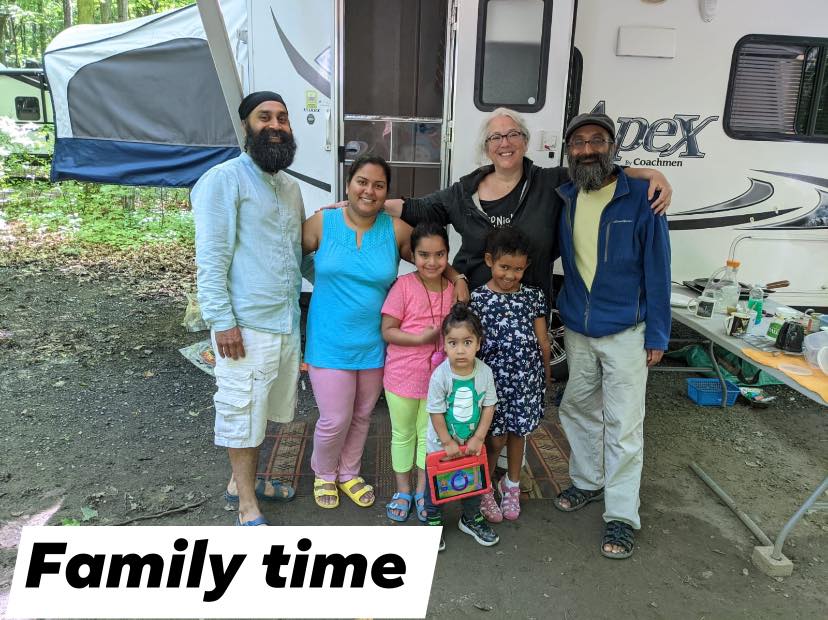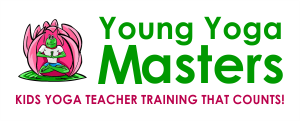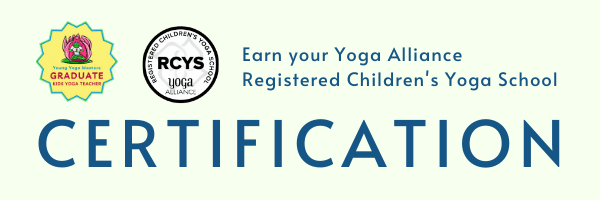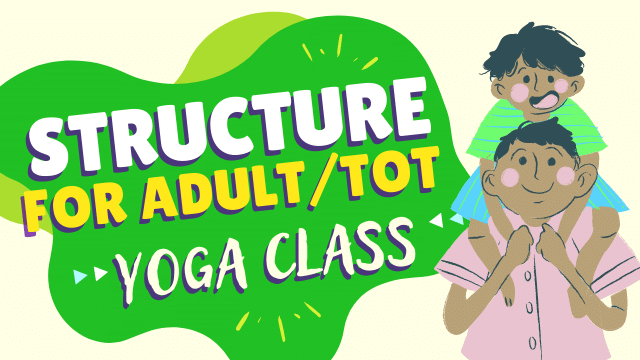
Let’s talk about family yoga, more specifically, adult and tot yoga.
I taught an adult/tot yoga class for over a decade at a community centre. Back then it used to be called Moms and Tots, fortunately, we’ve learned to name this class in a more inclusive way. I’ve seen this class called Adult and Tot Yoga, or Big Yogi, Little Yogi, or any of the other creative names you can come up with.
When?
The class took place in the afternoon, for many attending the timing was after naptime and before the school pickup time. It was 45 minutes long and the goal was for parents/caregivers and their children to enjoy yoga.
This timing meant that children who attended were either home-schooled or were too young to go to kindergarten. All the kids could walk, and they were under 4 years old.
Planning a Series with the Seasons
Each session included about 8 – 12 classes, they were planned around the seasons:
- 1 sessions from fall till around Thanksgiving
- 1 session after thanksgiving to December holidays,
- 1 session from January to spring break,
- 1 session from spring to the last week of school,
- We didn’t run during the summer (which I liked).
What to Focus on in an Adult/Tot Class
Over the years I had opportunities to try different teaching methodologies for each session. One series I focused on getting the children moving as much as possible. Another session I included more time for children to watch the adults do as much yoga as possible.
Over the years I taught almost every combination and focus.
Each style had its pluses and minuses and to this day, I don’t have a favourite. Each parent had a favourite style though, based on their personal preference. So write your class description to let people know what to expect for the class so people will sign up for the type of class they like.
When I taught at the community centre, the only description was: Moms and Tots Yoga. People didn’t expect a certain type of class.
If you are was writing the class description, let people know how much of the class is geared to the children, the adults, and how much to both children and adults at the same time.
There is no right way, but you will attract different students based on the description.
Let Your Students Know what to Expect
Whatever you do, make sure people know what you expect of them in the class.
For instance, for these community centre classes I told people they could arrive late because I knew with this age, a person could be completely ready to leave for a class and then a poop or a barf happens, and the plans change.
I ran the class like a drop-in, people could join at any time because we were never doing difficult poses. Even if someone arrived after the warm up activity they would be fine.
I also let them know what was expected throughout the class:
- During Yoga: I asked the adult to do the yoga and let the teacher give the kids instructions
- During relaxation: adults rest or do the moves to the song, and the teacher makes sure their children don’t leave the room.
- Emotional Support: But if a child starts crying, the parent soothes them and can even take them out of the room if needed.
In general, I want the parents to model the activity we are doing, especially during the first few classes when the tots were a little shy. Children were more likely to try what they see their parents were doing.
Routine for an Adult and Tot Yoga Class
Whichever way I taught the class, I followed the same format each week of the session because that’s what works best for tots.
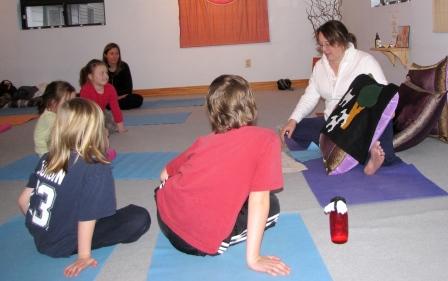
Established a structure for your adult and tot yoga classes:
- Welcome + Warm up: Start every class with a child-friendly song or activity for everyone to do together.
- Yoga Poses: at first I got both adults and children moving. As we got to the later weeks of the series, you can start to focus on getting adults moving while the children watch and play, or focus on getting the children moving while the adults get to connect as described below.
- Relaxation/Story: We closed with a relaxation activity, then maybe a story, activity, or game. In the 45-minute class we had about 5 – 8 minutes of relaxation time with some beautiful mantra music and participants could either lie down or do some movements to the song with me. This power rest was greatly appreciated by the adults.
The time in the middle was the opportunity to try different strategies. It was about 15 – 20 minutes in the middle of the 45-minute class.
Option to Teach to the Children
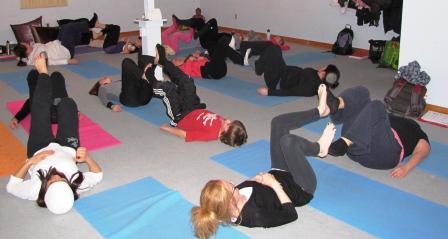
Teaching to the children gives the adults a chance to get to know each other and connect with other adults, which is something many new parents crave. Parents are often a little bewildered about the change their life is going through as a parent, especially if it is their first child. New parents aren’t used to spending so much time with an infant and miss the adult connection that they may have had when they were working or going to school, in their lives before children.
Focusing on the children helped create time for the adults to connect as adults.
How this looked in a class series is we started with a whole group activities then I would set up a row of mats side by side. Then we would move to children’s activities. The children walked down the mats pretending to be dogs, dinosaurs, or kangaroos etc. The adults could join in, but more often they watched their kids from the side and got to talk to each other.
Option to Teach to the Adults for Part
I also experimented with focusing on doing yoga with the adults to give them a chance to move more vigorously.
I set up a play area for the children. We had lots of mats at this location and it was a big room, so each adult had their own mat, each child had their own mats, and we had some mats put out in a play area in the middle of the circle as well.
I would lead some adult-style poses. The kids could sit on their mats and watch or try to follow along, or they could go explore the toys in the play area if they were not interested in doing yoga.
This let the adults do a little more yoga.
Teach the Class to Create Community not to Do Yoga
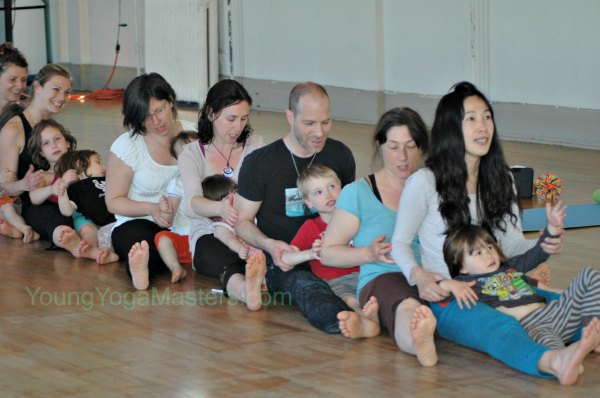
This Adult and Tot class was new so I got to experiment with all kinds of fun styles. Some worked better than others, but there was always care and joy at the heart of it.
If you’re teaching an adult and tot class, it is not going to be like an adult yoga class and it doesn’t have to be completely like a kids class.
My goal with the class was to create a community with the people attending.
This is a really valuable time to connect parents with each other and help them find a support network.
In the end, Family Yoga is not about getting a workout, it’s about being together and creating bonds within families and between families.
Family Yoga Certificate
Find out more about the Family Yoga 4 Hour Certificate here.
